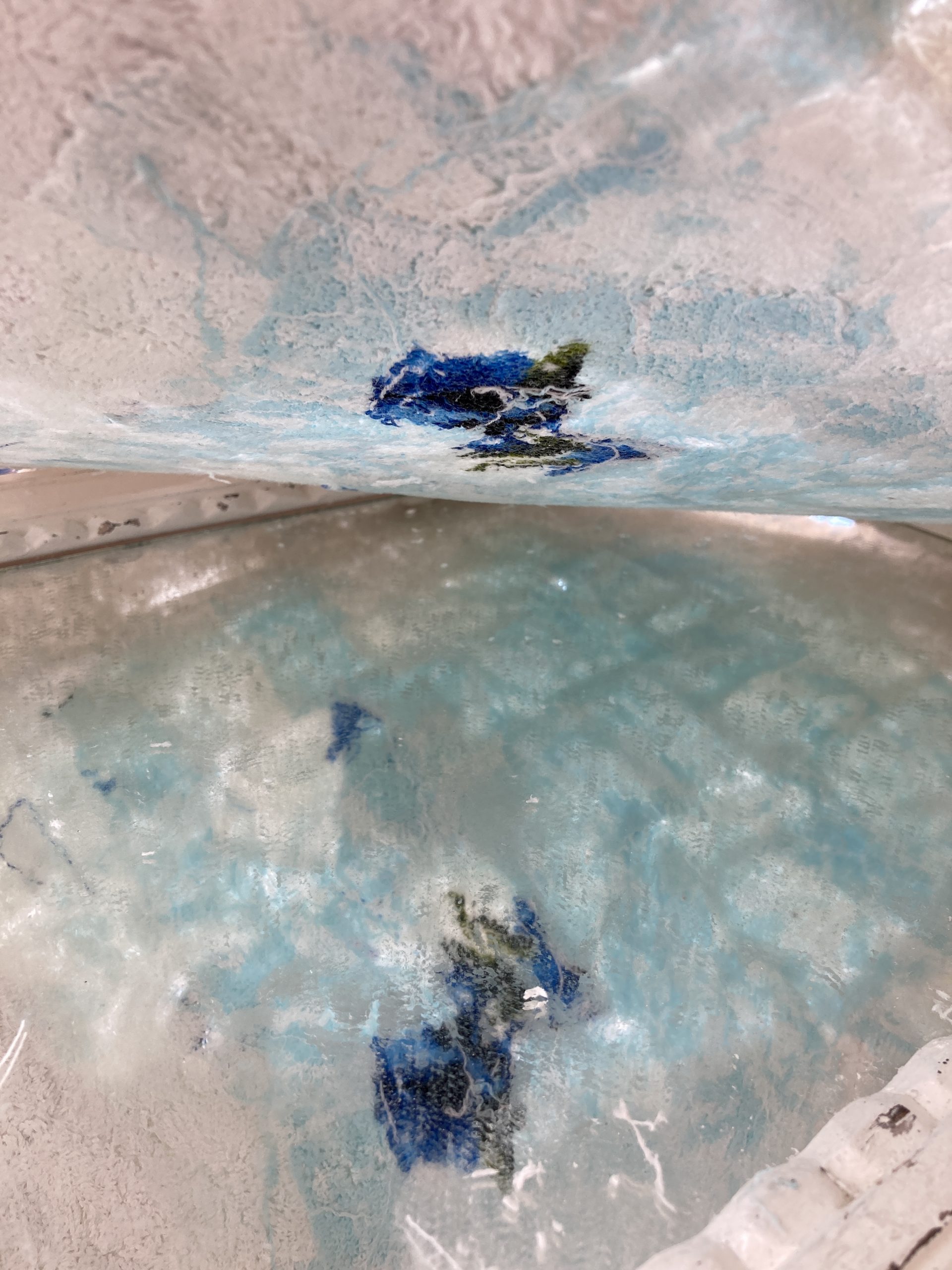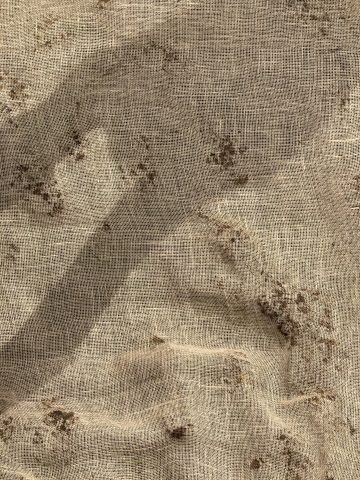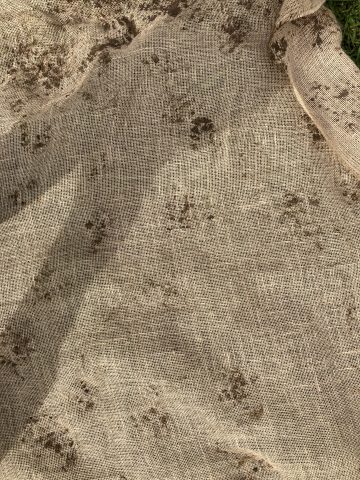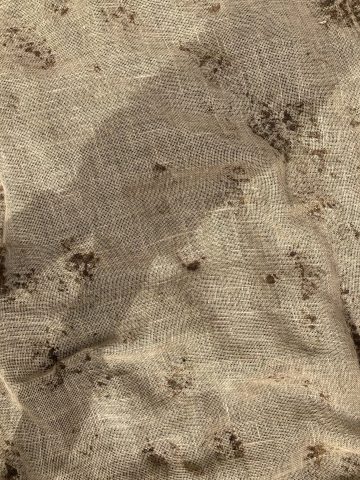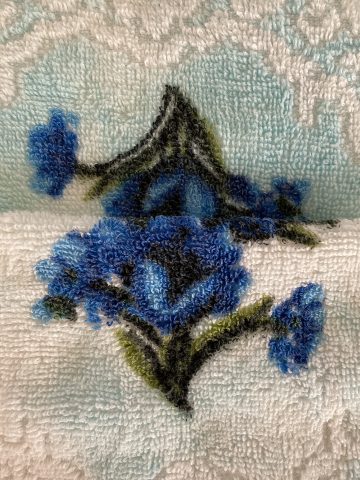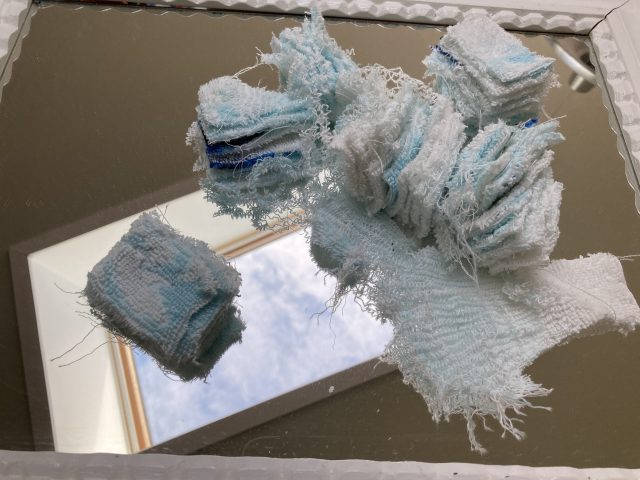Within my practice, I explore a physical, visceral, sensory and sometimes absurd triangulation of language, performative bodily action, materiality and trace. My approach to making is intuitive and involves an empathic, bodily connection with the physical nature of form.
I am curious about French theorist Giles Deleuze’s (1925-1995) use of the word becoming; as “a process of change, flight, or movement”,1 and the relationship of this idea to a new materialist aesthetic of co-collaboration, and the wilful contribution of materials as art comes into being. Working typically with domestic textiles, my materials are kept minimal so as not to overcomplicate the process, such a towel and glue and my body as agitator. I invite a new perspective on what already exists materially, and under altered conditions I try to become in synch with the rhythm of this reforming and reshaping of material body as sculpture. How do I know that the art is happening in this state of becoming and how do I know when the process is complete?
I see this in relation to a physical making practice, such as Kazuo Shiraga (Japan, 1924-2008) who used the force of his body through his feet to capture a sense of primordial energy in a moment or moments of action and interaction with the materials in process. While Shiraga used primarily paint in relation to the body, I aim to ask similar questions by using domestic textiles, art-shop supplies and banal objects; folded, stretched, squashed into vessels or containers with glue. This current thinking has resurfaced interest in the work of British sculptor Rachel Whiteread (b. 1963), and the way she deals with absence by presenting its opposite, via casts of fixtures, furniture and spaces.2 I’m curious about how she works with the physical presence of boundaries, and wonder what my own approach to the boundary is? What am I saying in drawing attention to the materiality of what dwells within the perimeter of the boundary, stuffed up against its edge? What needs to be said visually and what should be left unsaid?
I am also curious about what these familiar domestic textiles reveal of the social and cultural reality behind their making, care and maintenance, and how this influences the meaning and value of the pieces I make. From the cotton fields, to textile manufacturing, shipping and retail, to the washing and folding of these materials within the home. How can this exploration of materiality and trace, positively contribute to sustainable efforts and ecofeminist perspectives? Alongside these considerations of sustainability, the importance of an ethical code of conduct in my practice has emerged. I currently source materials that have completed their intended functional purpose, catching them on the fold, or turn, as such. Yet in diverging these materials like; a decommissioned guest towel from being forwarded to Women’s Refuge, or a threadbare towel donated to Hospice being passed onto the SPCA, I have interfered in this process, created an ethical dilemma, and I want to do this better! How do I maintain a sense of response-ability as a maker while working in this way, and is it possible that my making practices and creative output, could have a positive impact on these non-profits and charities, and the communities they serve?
[1] Deleuze, Gilles. The fold: Leibniz and the Baroque. Minneapolis: University of Minnesota Press, 1993.
[2] Richard Noble, The Meaning of What Remains. In: Eckhard Schneider, ed. Rachel Whitehead): Doors Floors and Stairs. Kunsthaus Bregenz, 2005.
